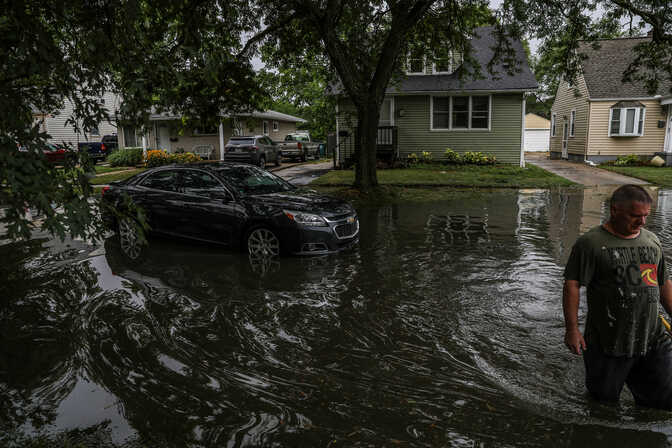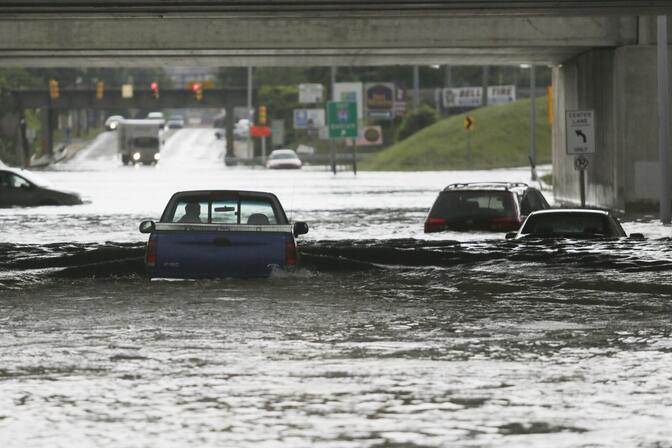
Traditional infrastructure design often makes extreme flooding events worse
Massive 2014 flooding event in southeast Michigan showed why systems thinking beats local thinking in flood protection.

Massive 2014 flooding event in southeast Michigan showed why systems thinking beats local thinking in flood protection.
Much of the nation’s stormwater infrastructure, designed decades to a century ago to prevent floods, can exacerbate flooding during the severe weather events that are increasing around the globe, new research led by the University of Michigan demonstrates.
The problem lies in traditional planning’s failure to recognize flood connectivity: how surface runoff from driveways, lawns and streets—and the flows in river channels and pipes—are all interlinked. The result is interactions, often unanticipated, between different stormwater systems that can make flooding worse.

“When we design, we typically focus on localized solutions,” said Valeriy Ivanov, U-M professor of civil and environmental engineering and co-first author of the study published in Nature Cities. “We have an area of concern, sometimes it’s a single plot of land, or a set of parcels that need to be connected by stormwater infrastructure, and we design specifically for those areas.
“But those areas are impacted by flooding that occurs around them, and that means designed stormwater infrastructure may have unintended consequences.”

The study is based on record-breaking rainfall that hit Metro Detroit on Aug. 11, 2014, resulting in flooding across the region. The disaster closed highways, stranded drivers, and caused power outages and property damage to over 100,000 homes, with a cost of $1.8 billion. Researchers analyzed data from that event, particularly from the city of Warren, and placed their findings in the context of current U.S. stormwater design standards and flood warning practices to develop policy recommendations.
Those include:

“Current flood mapping practices are indicative of outdated thinking that needs to change,” said Vinh Tran, U-M assistant research scientist in civil and environmental engineering and co-first author. “Whether it’s the Federal Emergency Management Agency or someone else producing it, they only provide estimates for floodplains that are near rivers. But here’s the problem: In cities, flooding can happen far from any river or stream.
“Take Warren, Michigan, for example. The official flood maps didn’t show flood risks in parts of the city that were miles from any major waterway. And it’s not just Warren—this is typical all over the country.”
According to FEMA, flooding is “the most common and costly disaster in the U.S.” That risk is increasing due to climate change.

Financially, it’s a problem. FEMA notes that between 1980 and 2000, FEMA’s National Flood Insurance Program paid out $9.4 billion in insurance claims. Over the following 20-year period, the program paid out $62.2 billion—an increase of over 660%.
“Without updated designs, the economic impact of flooding will only grow, placing a heavier burden on governments and taxpayers,” said Jeff Bednar, environmental resources manager for Macomb County and a research contributor on the project. “By investing in resilient infrastructure now, we not only protect our environment but also strengthen the foundation for economic growth.”
Other contributors to the research include: G. Aaron Alexander and Daniel Wright of the University of Wisconsin and Jongho Kim of the University of Ulsan in South Korea.
The research was funded by the U.S. National Science Foundation, U.S. Department of Defense, Environmental Protection Agency and National Research Foundation of Korea.

Marketing Communications Specialist
Department of Civil and Environmental Engineering